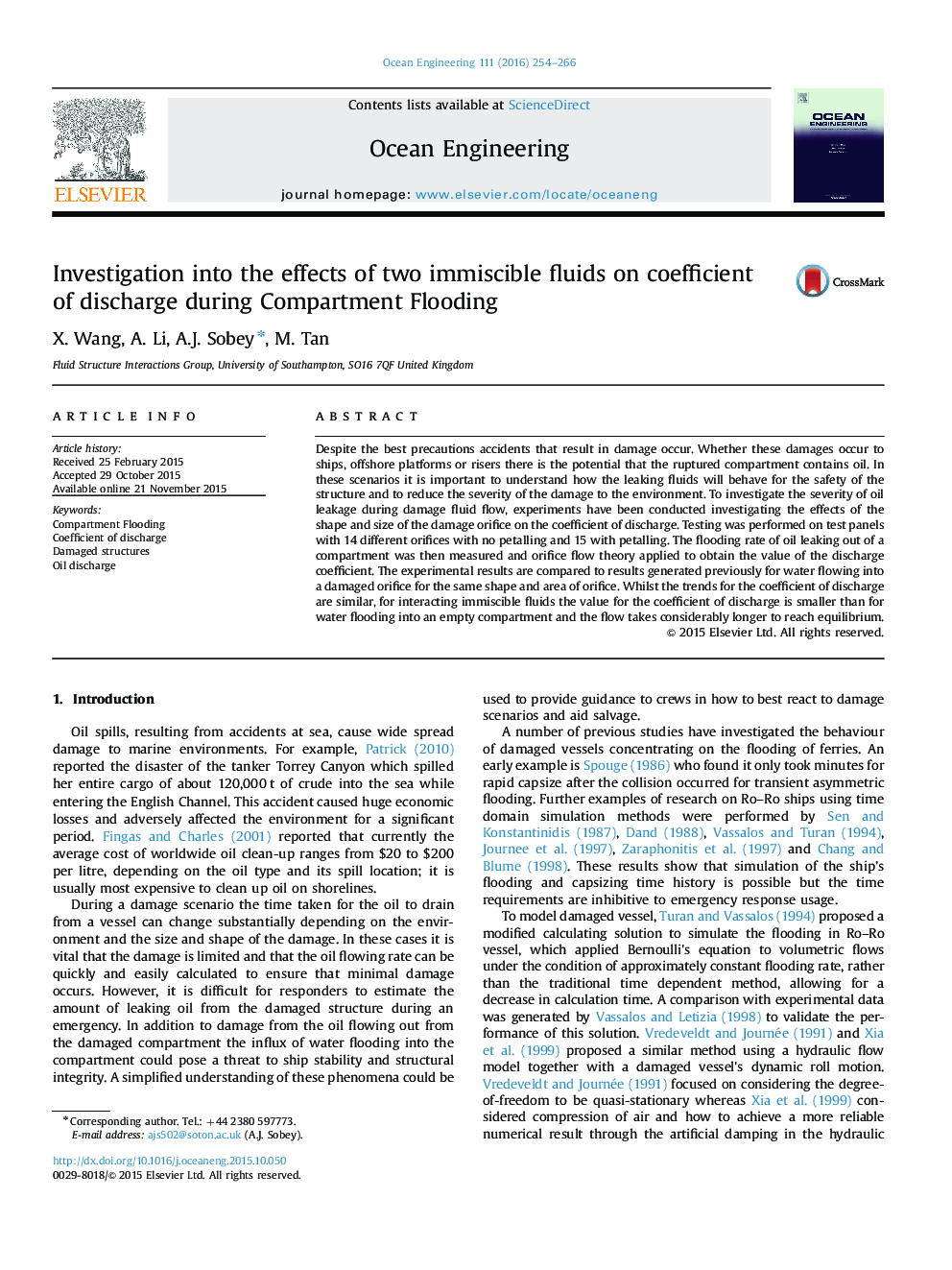| Article ID | Journal | Published Year | Pages | File Type |
|---|---|---|---|---|
| 8065084 | Ocean Engineering | 2016 | 13 Pages |
Abstract
Despite the best precautions accidents that result in damage occur. Whether these damages occur to ships, offshore platforms or risers there is the potential that the ruptured compartment contains oil. In these scenarios it is important to understand how the leaking fluids will behave for the safety of the structure and to reduce the severity of the damage to the environment. To investigate the severity of oil leakage during damage fluid flow, experiments have been conducted investigating the effects of the shape and size of the damage orifice on the coefficient of discharge. Testing was performed on test panels with 14 different orifices with no petalling and 15 with petalling. The flooding rate of oil leaking out of a compartment was then measured and orifice flow theory applied to obtain the value of the discharge coefficient. The experimental results are compared to results generated previously for water flowing into a damaged orifice for the same shape and area of orifice. Whilst the trends for the coefficient of discharge are similar, for interacting immiscible fluids the value for the coefficient of discharge is smaller than for water flooding into an empty compartment and the flow takes considerably longer to reach equilibrium.
Related Topics
Physical Sciences and Engineering
Engineering
Ocean Engineering
Authors
X. Wang, A. Li, A.J. Sobey, M. Tan,
